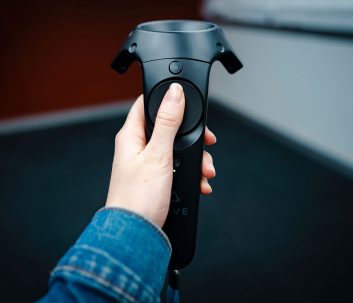
A ride in a Waymo driverless car
Congrats! This car is all yours, with no up one “This journey will differ. With no one else in the car, Waymo will do all of the driving. Love this free ride on us!”
Moments later, an empty Chrysler Pacifica minivan appears and navigates its way to my place close to a playground in Chandler, the Phoenix suburb where Waymo has been testing its autonomous vehicles since 2016.
Waymo, the Google self-driving-project-turned-Alphabet More than a dozen journalists experienced driverless rides in 2017 to a closed course at Waymo’s testing facility in Castle; and Steve Mahan, who is legally blind, took a driverless ride in the organization’s Firefly prototype on Austin’s city streets back in 2015.
Different — and not merely because it involved an unprotected left-hand twist, busy city roads or the Waymo One program was used to hail the ride. It marks the beginning of a driverless ride-hailing service that’s presently being utilized by members of its early rider program and the public.
It’s a milestone that was Guaranteed — and has remained just out of reach — for years.
Krafcik declared on stage in the Lisbon Web Summit which”fully self-driving cars are here.” Krafcik’s series of confidence and accompanying blog article implied that the”race to independence” was nearly over. Nevertheless, it was not.
Almost two years after Krafcik’s comments, vehicles Driven by people — not computers still clog the roads in Phoenix.
Despite some progress, Waymo’s Until today.
Waymo would not share particular Numbers on just how many driverless rides it’d be giving, just stating that it continues to ramp up its operations. Here’s what we do understand. There are dozens and dozens of consumers in its ancient rider program, all of whom will have access for this particular offering. These ancient riders can not request a completely driverless ride. Rather, they are matched with a driverless car if it is nearby.
This landmark. Waymo is conducting these”completely driverless” rides at a controlled geofenced atmosphere. Historical rider app members are people that are selected according to what ZIP code they live in and must sign NDAs.
Still, as I found my seatbelt and
It would be a mistake to presume that The job is finished. This moment marks the beginning of another, potentially lengthy, chapter in the evolution of driverless mobility as opposed to a sign that omnipresent independence is finally at hand.
A driverless ride sounds like a Futuristic joyride, but it is evident from the beginning that the absence of a human touch presents an abundance of practical and mental challenges.
After I am seated, belted and Underway, the car automatically calls Waymo’s rider support staff to address any questions or concerns concerning the driverless ride — bringing a short human touch to the experience.
I have been riding in autonomous Vehicles on public streets since late 2016. All of those rides had individual security drivers behind the wheel. Viewing an empty driver’s seat in 45 miles per hour, or a steering wheel spinning in vacant space as it hastens suburban visitors, feels inescapably surreal.
Other than that niggling feeling There were moments where the self-driving program’s driving impressed, such as how it captured an unprotected left turn as the traffic signal turned yellowish or how its speed matched surrounding visitors. The automobile seemed to even have mastered the human-like driving ability of glancing forward in a stop signal to indicate its intent.
Only a few typical quirks, like A more common rider, especially one that doesn’t often practice their variant of the driving Turing Test, might not have noticed them.
How safe is’secure enough’?
Waymo’s choice to place me in an Completely driverless car on public streets anywhere speaks to the confidence it places in its”driver,” but the firm wasn’t able to point to a specific source of the confidence.
Waymo’s Manager of Product Saswat Panigrahi declined to share the amount of driverless miles Waymo had gathered in Chandler, or that which particular benchmarks demonstrated that its driver was”safe enough” to handle the chance of a completely driverless ride. Citing the firm’s 10 million real-world miles and 10 billion simulation miles, Panigrahi contended that Waymo’s assurance comes from”a holistic picture.”
“Autonomous driving is complicated Enough not to rely on a metric that is singular,” Panigrahi explained.
Frustrating, argument, given that the most critical open question hanging over the autonomous drive area is”how safe is safe enough?” Absent additional details, it is difficult to say if my driverless ride reflects a significant amount in Waymo’s broader technical maturity or simply its confidence in a relatively unchallenging route.
The Organization’s driverless rides are This driverless territory is smaller compared to Waymo’s standard domain in the Phoenix suburbs, implying that confidence levels continue to be highly situational. Even Waymo vehicles with safety drivers don’t yet take passengers to a few of the most popular ride-hailing destinations: the airport.
Panigrahi redirected questions about The proliferation of driverless rides, saying only that the number has been rising and will continue to do so.
But, Panigrahi did reveal that The primary limiting factor is applying what it learned from study into ancient rider encounters.
“That is an adventure that you Can’t actually learn from someone else,” Panigrahi explained. “This is really new.”
A number of the most Troublesome challenges Of driverless mobility just emerge once riders are combined with the absence of a human behind the wheel. For example, developing the technologies and protocols that enable a driverless Waymo to find and pull over for emergency response vehicles and also enable emergency services to take over control was a intricate task that required extensive testing and cooperation with local governments.
“This was an Whole area that, Before doing full driverless, we didn’t need to worry as much about,” Panigrahi explained.
The consumer experience is another crux It’s an area to which Waymo has dedicated substantial time and resources — and for good reason. User experience turns out to maintain some amazingly thorny challenges when humans are taken out of the equation.
The everyday interactions involving a Passenger along with an Uber or even Lyft driver, like conversations about pick-up and drop-offs in addition to sudden changes in plans, become more complex once the motorist is a computer. It is a place that Waymo’s user experience search (UXR) staff admits it is still figuring out.
Computers and sensors may already Be better than individuals at specific driving capabilities, like remaining in lanes or avoiding obstacles (especially over long intervals ), but they lack the individual flexibility and adaptability required to be a fantastic mobility supplier.
Learning how to either handle or Prevent the complexities that people accomplish with little effort wants a mix of extensive experience and targeted research into regions like behavioural psychology that technology companies can seem allergic to.
Not Only a tech difficulty
Waymo’s early driverless rides mark The beginning of a new phase of growth filled with fresh challenges which can’t be solved with technology alone. Research into human behaviour, building up expertise in the stochastic interactions of this modern urban curbside, and growing protocols and relationships with local governments are deeply time-consuming attempts. These are not challenges which Waymo can throw tech at, but need painstaking work by people who understand other people.
Some of those challenges are Relatively simple. For example, it did not take long for Waymo to understand that falling off riders as close to the entry of a Walmart was really less convenient because of the high volume of traffic. But understanding that pickup and drop-off is not ruled by one principle (e.g. closer to the entry is always preferable ) hints at a hidden wealth of complexity that Waymo’s vehicles will need to master.
As irritating as the slow pace of Self-driving proliferation is, the simple fact that Waymo is embracing these challenges and also taking the opportunity to address it’s encouraging.
The first chapter of autonomous Drive technology development was concentrated on the purely technical challenge of earning computers drive. Weaving Waymo’s computer”driver” into the fabric of society demands an understanding of something much more mysterious and complex: individuals and how they interact with one another and the environment around them.
Given how basically autonomous Mobility could affect our society and cities, it’s reassuring to know that one Of the tech’s leading programmers is taking the time to understand and Adapt to them.




